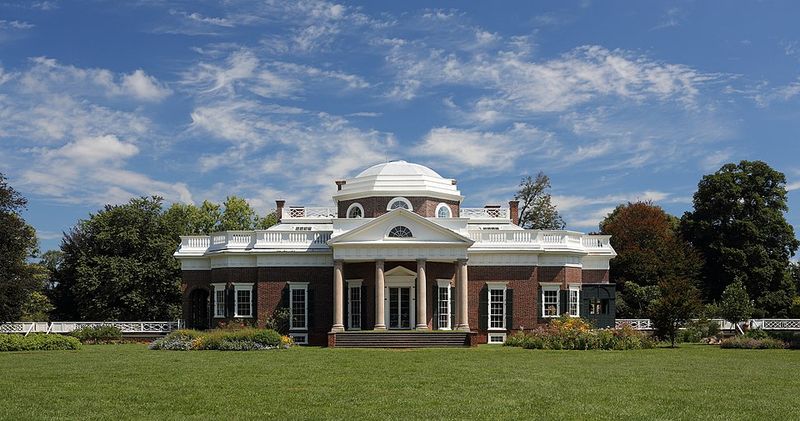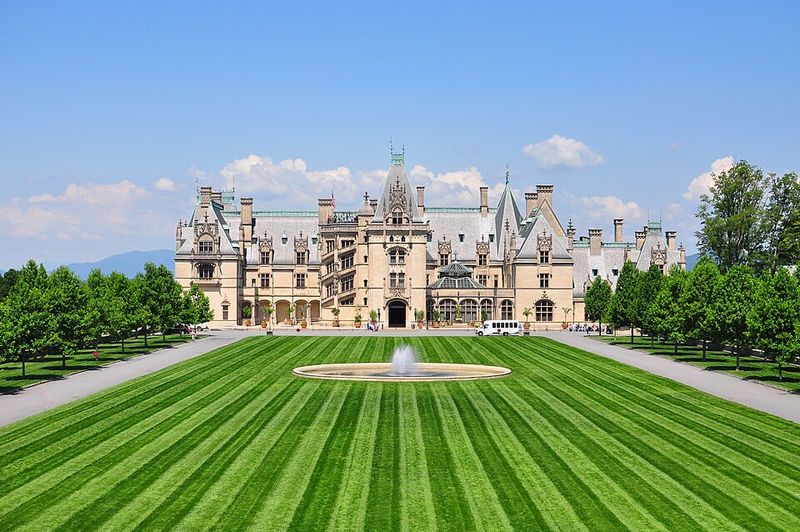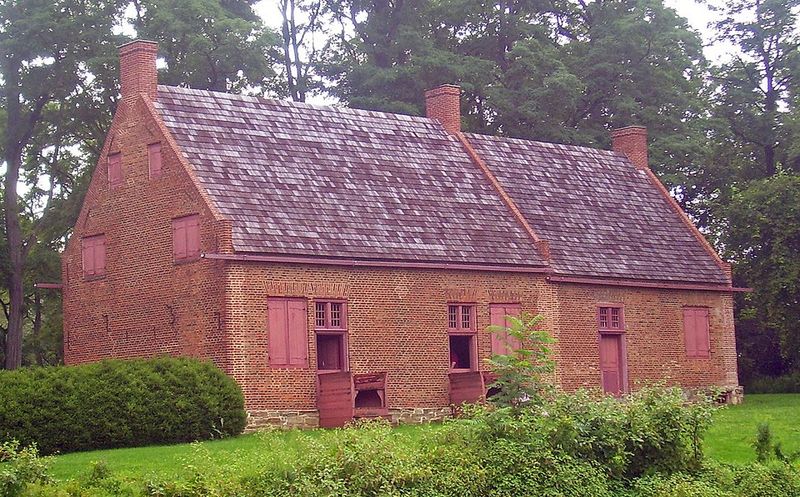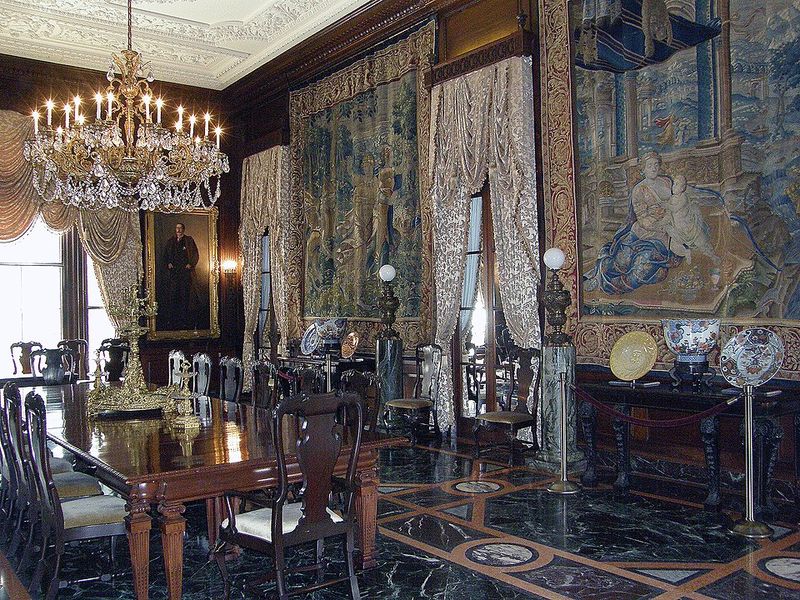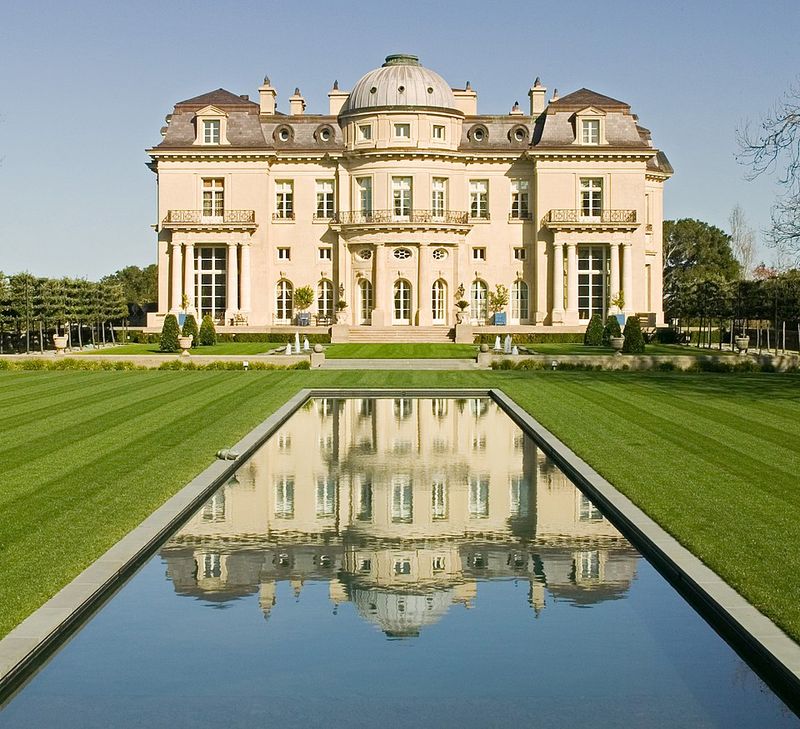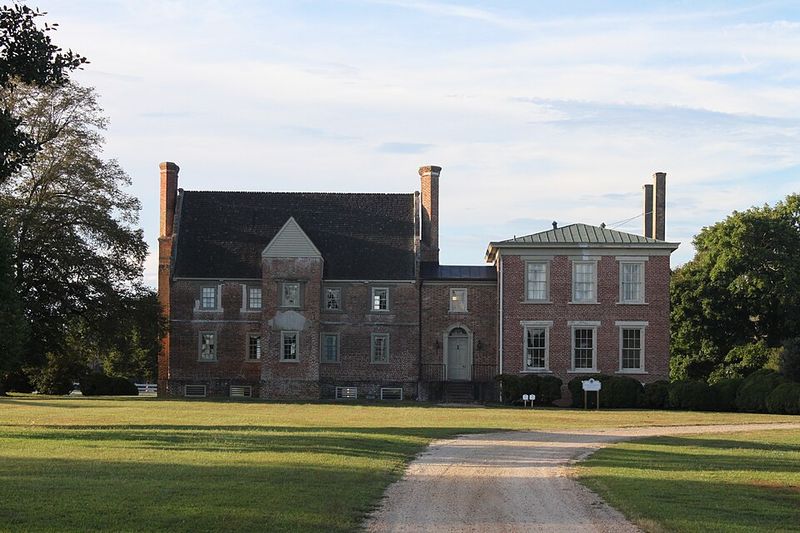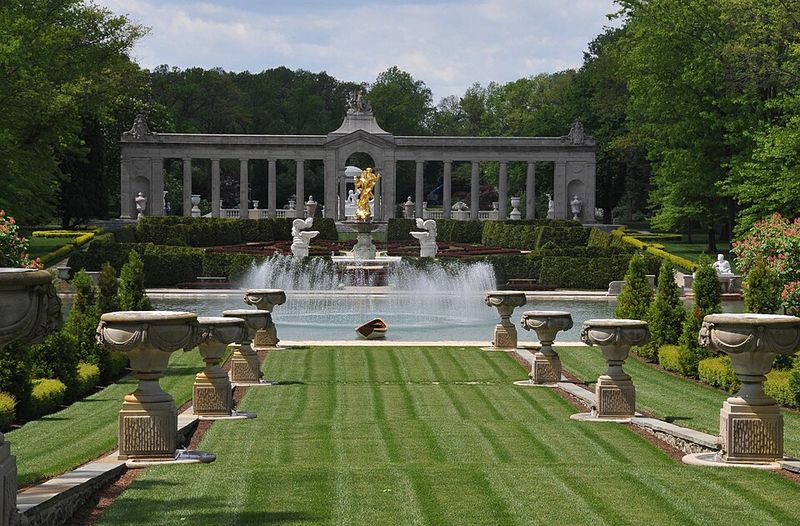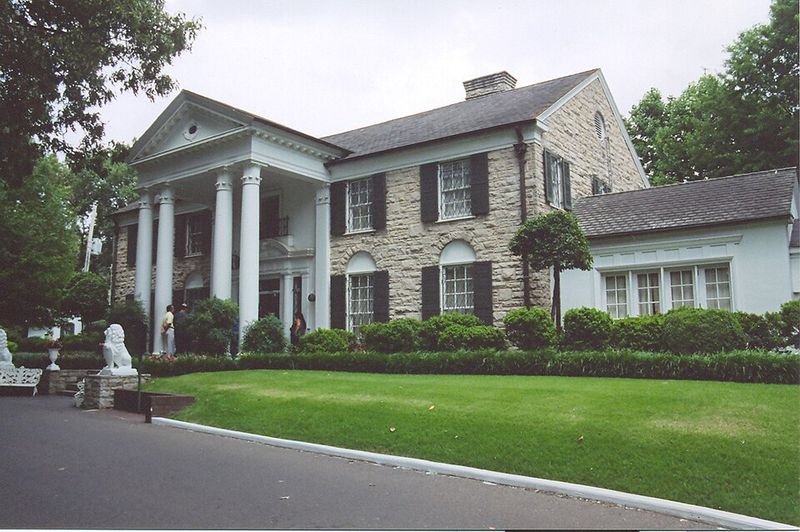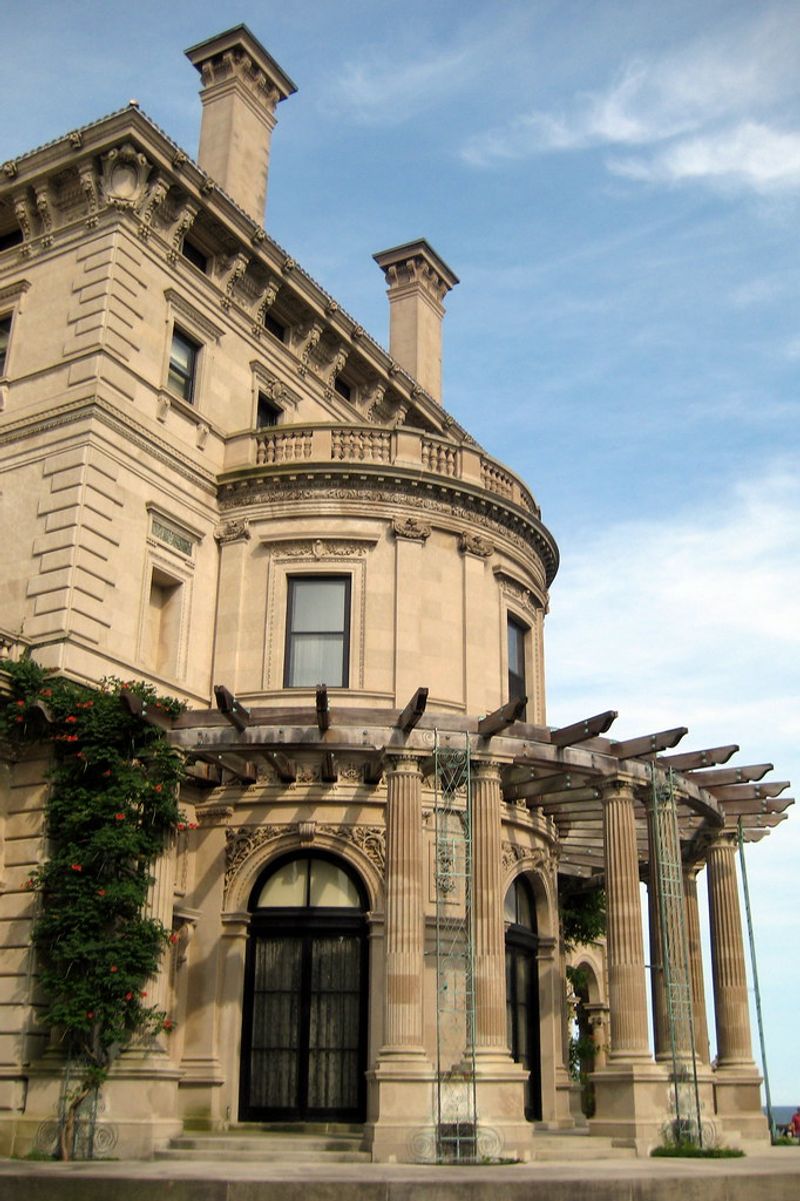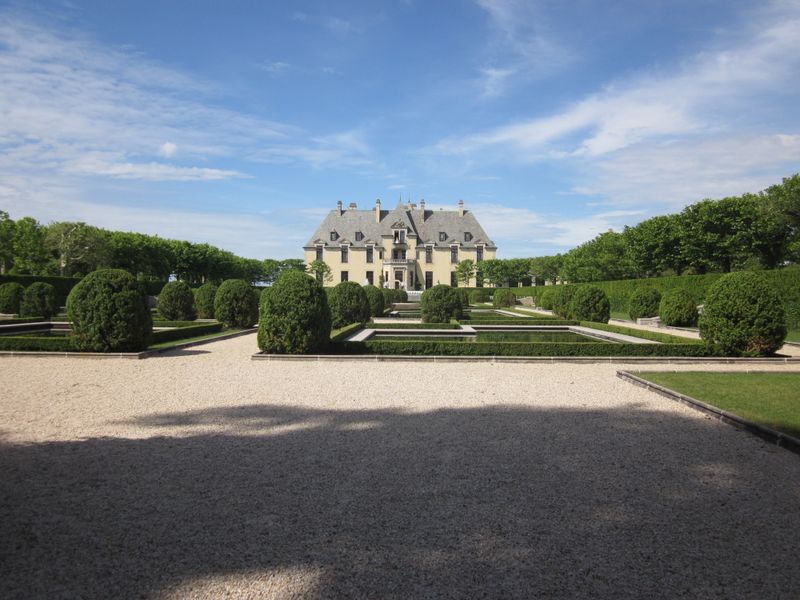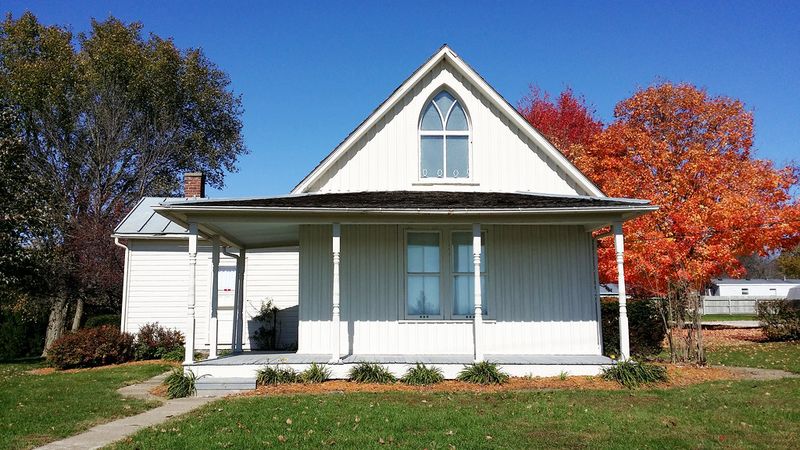America’s historic houses tell stories that textbooks can’t capture. From colonial cottages to Gilded Age mansions, these homes reveal how people lived, dreamed, and shaped our nation. Each building stands as a time capsule, preserving architectural styles, cultural shifts, and personal legacies that continue to inspire visitors today.
Monticello (Charlottesville, Virginia)
Thomas Jefferson spent over four decades designing and redesigning his beloved Monticello, blending Neoclassical Palladian principles with American ingenuity. The result is an architectural masterpiece that reflects the mind of its creator—inventive, curious, and ambitious.
As the only U.S. presidential residence honored as a UNESCO World Heritage Site, Monticello holds a unique place in history. Visitors walking through its halls encounter Jefferson’s innovations, from hidden staircases to rotating shelves.
Beyond architecture, the estate offers insight into plantation life and the complex legacy Jefferson left behind. Exploring Monticello means grappling with both brilliant achievement and uncomfortable truths about America’s past.
Biltmore Estate (Asheville, North Carolina)
George Washington Vanderbilt II dreamed big when he commissioned America’s largest privately-owned house between 1889 and 1895. With roughly 250 rooms sprawling across 175,000 square feet, Biltmore defines extravagance.
Nestled in the Blue Ridge Mountains, this Châteauesque mansion exemplifies the Gilded Age’s obsession with scale, artistry, and ambition. Its turrets, stone facades, and manicured grounds transport visitors to a European château.
Walking through Biltmore feels like stepping into a fairy tale designed for American royalty. The estate continues to draw crowds who marvel at its opulence and wonder what life must have been like for the Vanderbilts in their mountain paradise.
Van Alen House (Kinderhook, New York)
Built around 1737, the Van Alen House stands as a beautiful example of Dutch Colonial architecture in the Hudson Valley. Its sturdy construction and traditional design showcase the craftsmanship that early settlers brought to America.
Designated a National Historic Landmark, this house has survived centuries while maintaining its authentic character. The building’s enduring presence in rural New York tells the story of Dutch influence on American architecture.
Unlike grander estates, the Van Alen House charms visitors with its simplicity and historical honesty. It reminds us that not all important houses need to be palaces—sometimes the modest ones teach us the most about everyday colonial life.
Anderson House (Washington, D.C.)
Also known as the Larz Anderson House, this Beaux-Arts mansion was built between 1902 and 1905 as a showcase of Gilded Age diplomacy and collecting culture. Its grand rooms overflow with art, tapestries, and artifacts gathered from around the world.
Today functioning as a museum, Anderson House opens a window into the elite social life of early 20th-century Washington. The mansion hosted diplomats, politicians, and society figures who shaped American foreign policy.
Visitors can wander through lavishly decorated rooms that feel frozen in time. Each corner reveals another treasure, making it easy to imagine the glittering parties and important conversations that once filled these halls.
Carolands Chateau (Hillsborough, California)
Constructed between 1914 and 1916, Carolands Chateau brought European grandeur to California’s hillsides. With 98 rooms designed in the Beaux-Arts and American Renaissance styles, this mansion embodies West Coast luxury during the Gilded Age.
The building’s sheer size and architectural sophistication made it a landmark from the moment construction finished. Its formal gardens and elaborate interiors rival anything found on the East Coast.
Carolands proves that California’s wealthy elite could match—and sometimes surpass—their Eastern counterparts in creating palatial homes. The mansion remains a testament to an era when money flowed freely and builders dreamed without limits.
Bacon’s Castle (Surry County, Virginia)
Did you know that America’s oldest documented brick dwelling dates back to 1665? Bacon’s Castle in Surry County, Virginia, holds that distinction while also being a rare example of Jacobean architecture in the New World.
Its distinctive stone gables and solid brick construction set it apart from typical colonial buildings. The castle’s name comes from Nathaniel Bacon’s rebellion, though he never actually owned the property.
Walking through Bacon’s Castle means touching the earliest chapter of American architectural history. The building survived wars, economic changes, and centuries of weather to remain an early-colonial gem that connects us directly to Virginia’s founding era.
Nemours Estate (Wilmington, Delaware)
Built for Alicia Du Pont, Nemours Estate channels the elegance of French châteaux with its 102 rooms and meticulously designed formal gardens. The mansion reflects the DuPont family’s immense wealth and their desire to create something truly spectacular.
Every detail at Nemours speaks to careful planning and unlimited resources. From marble floors to gilded ceilings, the estate showcases craftsmanship that few could afford even during the Gilded Age.
Visitors often describe Nemours as feeling more European than American, which was exactly the point. The DuPonts wanted to bring old-world sophistication to Delaware, and they succeeded in creating a legacy that still impresses generations later.
Graceland (Memphis, Tennessee)
When Elvis Presley purchased Graceland in 1957, he transformed a colonial-style mansion into a cultural landmark. While it may not match other houses on this list in age, Graceland’s importance lies in its connection to rock and roll royalty.
The King of Rock and Roll made Graceland his personal paradise, decorating it with bold 1970s style that reflected his personality. Today it functions as both museum and pilgrimage site for fans worldwide.
Graceland proves that historic significance isn’t just about age—it’s about cultural impact. Millions have walked through its famous Jungle Room and meditation garden, making it one of America’s most visited private homes.
The Breakers (Newport, Rhode Island)
Calling The Breakers a summer cottage seems almost laughable when you consider its 70 rooms and Italian Renaissance grandeur. Built in 1895 for Cornelius Vanderbilt II, this Newport mansion symbolizes everything excessive and magnificent about the Gilded Age.
The Vanderbilt family spared no expense, importing materials from Europe and hiring the finest craftsmen available. Every room dazzles with gold leaf, marble, and artistic details.
Standing on The Breakers’ terrace overlooking the Atlantic Ocean, you can almost hear the echoes of elaborate parties and see elegant guests in their finest attire. It remains Newport’s crown jewel and a monument to American wealth.
Oheka Castle (Huntington, New York)
Long Island’s Gold Coast earned its name from estates like Oheka Castle, built in the early 20th century as a monument to American luxury. This mansion inspired fictional estates in literature, including elements of Gatsby’s legendary home.
Otto Hermann Kahn, a wealthy financier, created Oheka as his personal retreat from Manhattan’s bustle. The castle’s 127 rooms and formal gardens represented the pinnacle of success for America’s new aristocracy.
Today, Oheka has been restored to its original splendor and opens its doors to visitors seeking a taste of Jazz Age glamour. Walking its halls feels like stepping into F. Scott Fitzgerald’s imagination made real.
The American Gothic House (Eldon, Iowa)
Grant Wood’s famous painting transformed a modest Iowa farmhouse into an American icon. Built in the Carpenter Gothic style, this small house gained worldwide recognition when Wood used it as the backdrop for his 1930 masterpiece.
Unlike mansions built to impress, the American Gothic House represents ordinary rural life. Its fame comes not from size or luxury but from its role in one of America’s most recognizable artworks.
Visitors travel to Eldon specifically to stand where Wood stood and recreate the famous painting’s pose. The house proves that cultural significance can elevate even the humblest building to historic treasure status, showing how art and architecture intertwine in unexpected ways.
